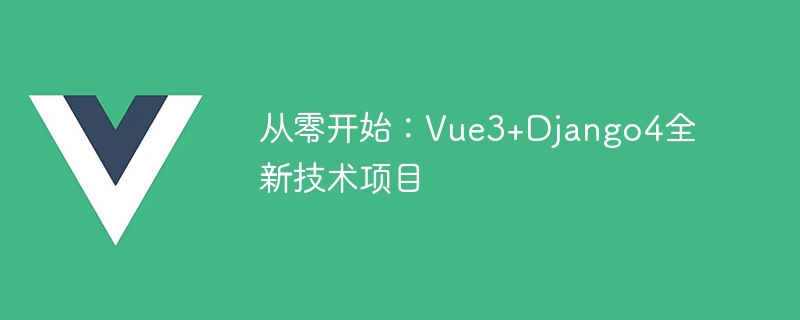

Start from scratch: Vue3 Django4 new technology project
Introduction:
In today's rapidly developing technology field, full-stack development has become a trend. As popular frameworks for front-end and back-end development, Vue and Django not only have a wide range of application backgrounds, but also bring more interesting and powerful features in the latest versions. This article will introduce how to use Vue3 and Django4 to build a new technology project, and demonstrate their power through code examples.
1. Project planning and preparation
Before starting, we need to plan and prepare the project. First, we need to make sure we have Node.js, Python, and the Django development environment installed. We can then create a new Vue project by installing the Vue CLI with the following command:
npm install -g @vue/cli vue create my-project cd my-project
Next, we are ready to create the Django project. Install Django through the following command:
pip install Django
Then, we can create a new Django project through the following command:
django-admin startproject myproject cd myproject
2. Front-end development: Vue3
Copy after login
3. Back-end development: Django4
from django.http import JsonResponse def my_view(request): data = { 'message': 'Hello, Django4', 'description': 'This is a demo project' } return JsonResponse(data)
from django.urls import path from .views import my_view urlpatterns = [ path('my-view/', my_view, name='my-view'), ]
4. Connect the front-end and back-end: API interface
After the front-end and back-end are ready, we need to connect them through the API interface. In Vue3, we can use the axios library to send HTTP requests. Here is an example:
import axios from 'axios' axios.get('/api/my-view/') .then(response => { console.log(response.data) }) .catch(error => { console.error(error) })
In Django, we can use Django REST Framework to create and manage API interfaces. The following is an example:
from rest_framework.decorators import api_view from rest_framework.response import Response @api_view(['GET']) def my_view(request): data = { 'message': 'Hello, Django4', 'description': 'This is a demo project' } return Response(data)
5. Project deployment and testing
After completing the development and passing the test, we can deploy the project. For front-end deployment, we can use the Vue CLI's build command to generate static files and deploy them to the server. For backend deployment, we can use Django's runserver command to start the server. We can also use Nginx as a web server to reverse proxy front-end and back-end requests.
6. Summary
By using Vue3 and Django4, we can easily build powerful full-stack technology projects. Vue3's componentization and responsive programming model make front-end development more efficient and elegant. Django4's views, URL routing, and API interfaces make back-end development simpler and more flexible. I hope this article will help you learn and master the technologies of Vue3 and Django4.
Code example:
Reference link:
Note: This article is based on Vue CLI 4.x Written with Django 4.x, some examples may need to be adjusted according to actual conditions.
The above is the detailed content of Starting from scratch: Vue3+Django4 new technology project. For more information, please follow other related articles on the PHP Chinese website!